It’s been my experience that a lot of people misunderstand sports performance training. You may be thinking, what’s to misunderstand? Isn’t sports performance training just a fancy way of saying you are an athlete working out so you’re not completely out-of-shape when the season rolls around?
Kind of, but not really.
Here’s the issue. Many people view sports performance training as similar to lifting at their local box gym, with perhaps the added benefit of a coach motivating you.
Without sugar-coating it, this is just WRONG!
Today, I’ll give you 5 reasons why comparing a quality sports performance training program to working out at a box gym doesn’t make much sense at all. It’s kind of like comparing a Macbook to a calculator. Yup, Macbooks and calculators both have buttons, but they are two completely different products with completely different purposes.

Sports Performance Training vs. Working Out
1. Evaluations
We take every one of our athletes through a full evaluation before he/she begins training. During the evaluation, we’ll go over the athlete’s injury history, past training experience and goals. Next, we screen for any mobility restrictions in the athlete’s ankles, hips, t-spine and shoulders. Finally, the athlete receives a Functional Movement Screen (FMS) from one of our certified Functional Movement Specialists. This movement screen, paired with the mobility analysis, can give us clues about an athlete’s risk for certain injuries.
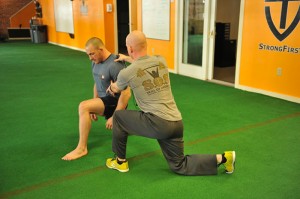
The evaluation allows us to collect the nuts and bolts required to build a program specifically designed to help this individual athlete achieve his/her sports performance training goals.
2. Proper Programming
At Skill of Strength, we strongly believe that athletes looking to perform at their top athletic potential must train year-round. Training should be a constant progression, not an 8-week cram session prior to every season. Cramming may work for your chemistry test, but it doesn’t work for improving performance and longevity on the field!
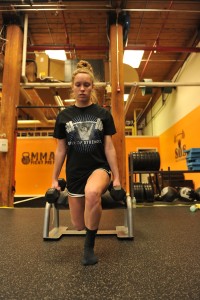
Your programming should change throughout the year. In fact your post-season, off-season, pre-season and in-season training programs will likely all be different if you’re working with an experienced strength and conditioning coach.
Pssst, One thing you can remove from all of your training programs in all seasons are those ridiculous looking shrugs. If you’re having trouble keeping your head on your shoulders while wearing a helmet, schedule a doctor’s visit instead.
Every athlete has a different training background. An athlete who has been training for a year and has been preparing for pre-season is programed differently than an athlete who recently started a sports performance training program and is just three weeks out from his fall season.
3. Coaching
A qualified sports performance training coach has the ability to take an athlete, and an exercise, and decide the best technique for that individual to maximize the result.
For example certain athletes are built for certain lifting styles due to their physiological make-up. A deadlift can be taught a number of different ways depending on each athlete’s anatomy and training goals.
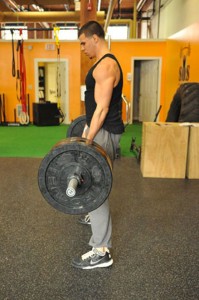
Hopefully you’re starting to realize some major differences between participating in a sports performance training program and training at your local box gym. If not, we are only on reason #3.
4. Carry-Over
The majority of athletes hibernate in the weight room in the off-season and the first time they step out onto a field is during captain’s practice. Not the best approach!
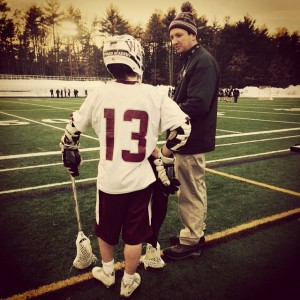
You’re an athlete! It’s important to transfer the strength you’re building in the weight room onto the field by doing some acceleration/deceleration, agility, elasticity and plyometric training as well.
Did you ever notice the athletic trainer’s room is packed at the beginning of the season with hip flexor strains, hamstring pulls and shin splints?
Related: Tempo Running for Athletes May Help Athletes Avoid Hamstring Pulls and Hip Flexor Strains
Instead of fighting the crowds in the athletic trainer’s room, sneak some turf time in prior to your season. Of course it’s great that you’re training in the weight room during your off-season, but you should be training like an athlete instead of a power lifter!
5. Conditioning
Different sports rely on different energy systems at different levels. No energy system is really turned off, but the primary process your body uses to create it’s energy (ATP, for you honors kids) can be completely different depending on the sport.
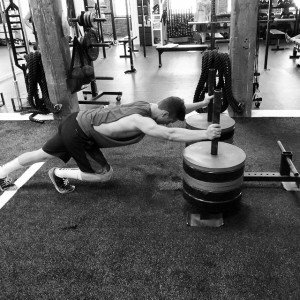
Let’s stop there with the science talk. What I’m saying is that going to just any fitness facility and spending a few minutes on the elliptical probably isn’t going to get you sports-ready. Instead, you should actually do conditioning more often than you make your parents dinner (almost never), and it should be done in a way that is actually going to positively impact your performance on the field.
Wanna learn more? You can go and read some texts on energy system development and create some kreb’s cycle diagrams, have long conversations with your lunch mates about fast and slow glycolysis, ATP regeneration and the role of lactic acid…or, you can get involved in a killer sports performance training program, and your coaches will have it covered.
Takeaway
If you are an athlete, find a sports-specific training facility with qualified strength coaches and proper programming.
Keep in mind, participating in a sports performance training program could potentially move you from playing your sport at a D3 school to a D1 school. You may receive a larger scholarship. Invest in your training and yourself now, because when you get older you will not have that chance!
